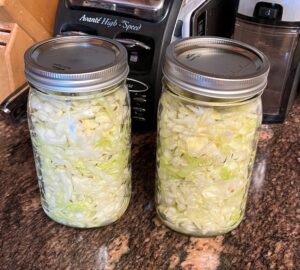 I wish I had been taught Chemistry differently. To this day, most of the chemistry I learned in school was as a side-benefit of my biology classes. I loved bio, and survived chemistry (required) and physics (ditto) in order to take the advanced biology class my senior year, wherein a good deal of chemistry was taught in passing, particularly when we were looking at DNA and genetics. But beyond that, Chemistry the subject seemed utterly detached from things I cared about. Okay, some times you just have to buckle down and get through the classes you don’t much care about (I’m looking at you, PE) to get your ticket punched and make your way out of high school. But I think I would have learned more if it had been related to something else. Like food.
I wish I had been taught Chemistry differently. To this day, most of the chemistry I learned in school was as a side-benefit of my biology classes. I loved bio, and survived chemistry (required) and physics (ditto) in order to take the advanced biology class my senior year, wherein a good deal of chemistry was taught in passing, particularly when we were looking at DNA and genetics. But beyond that, Chemistry the subject seemed utterly detached from things I cared about. Okay, some times you just have to buckle down and get through the classes you don’t much care about (I’m looking at you, PE) to get your ticket punched and make your way out of high school. But I think I would have learned more if it had been related to something else. Like food.
Flash forward a few decades to when I gave a lesson in bread-making to my daughter’s second grade class. It’s a perfect basic chemistry lesson for kids: simple enough to be reduced to 7-year-old level, but tied to something familiar (better yet, edible). I just came across the handout I did for the class, which is what put me in mind of it.
And this morning, spurred by an article in NY Times Cooking, I made sauerkraut. It is ridiculously easy: cut up a head of cabbage, put resulting shreds in a bowl, “massage” (the NYT term, not mine) two tablespoons of Kosher salt into the shreds for five minutes, until the cabbage starts to soften, reduce down, and release some liquid. Then pack into jars and stir every couple of hours, to speed fermentation. All the time I was up to my elbows in cabbage I kept wondering 1) is this really going to work? and 2) why does it work. So as soon as I had packed the cabbage into its jars and cleaned up the mayhem that cutting up cabbage produces, I hied me to the internet.
According to the Clemson University website, “Cabbage is converted to sauerkraut due to growth and acid production by a succession of lactic acid bacteria. Salt and limited air creates desirable conditions for the leuconostocs – a group of less acid tolerant lactic acid bacteria that grow better at 60°F to 70°F.” Fortunately for my sauerkraut, the winter temperature of my kitchen is somewhere around 65°. The salt works–as I noted as I worked–to soften and draw juice from the cabbage. As a bonus, it also works to keep undesirable bacteria at bay; you want the desirable bacteria, of course: the leuconostoc lactic acid bacteria that create lactic acid.
See? Chemistry!
The Clemson site gives a recipe that requires 25 pounds of cabbage and yields 9 quarts. I suspect that once my much more modest batch has fermented fully, it will be something closer to a quart and a half.
All of this reminds me that I need to make a batch of bread and butter pickles. For science!

Whereas I have been making bread this week. I want to say that it’s for science, but actually it’s step one in my annual emptying-of-pantry. I’ve used up all my yeast already, but not my flour. I have just enough wheaten flour for a single batch of bushbread, made (this time round) with beer, grated cheese and bush tomatoes.
I need to feed my sourdough starter before I can make this week’s bread (I was out of town for a few days, which disrupted Magda’s* feeding schedule). I swear to God, I’m going to be the size of the Empire State Building if I keep eating all the bread Magda wants me to make–thus sauerkraut, which is not only very healthy, but non-fattening. But definitely, leavened bread is science all the way down!
*Magda is my starter’s name. I was told by an instructor to name it, so I have done so. (My younger daughter took the same sourdough class and named hers “Trust Fund Baby.” Then she forgot to feed it, and Trust Fund Baby withered away to nothing.